Joining Forces: Collaboration and Leadership for Sustainability
Collaboration and Leadership for Sustainability
Introduction
The importance of sustainability as a business issue has steadily grown over the past two decades. Most businesses understand that their sustained success depends upon the economic, social and ecological contexts in which they operate. But the stability of those contexts can no longer be taken for granted. The physical environment is becoming more unpredictable, a more interconnected global economy is altering social conditions, and technological innovation is transforming the nature of consumption and production.
Sustainability has got to be something that we all care about. We need groups to collaborate that never have … everybody’s got to work together. We need to begin to manage this planet as if our life depended on it — because fundamentally, it does.
— Jason Clay, senior vice president, WWF
Corporate sustainability has evolved from expressing good intentions and looking for internal operational efficiencies to addressing critical business issues involving a complex network of strategic relationships and activities. As sustainability issues have become more global and pivotal to success, companies are realizing that they can’t go it alone. Through their strategic networks, business can, and arguably must, tackle some of the toughest sustainability issues, such as access to stressed or nonrenewable resources, avoiding human rights violations in value chains2 or moderating climate change.
Given the implications of sustainability’s evolution within the corporate sector, we — MIT Sloan Management Review (MIT SMR) and The Boston Consulting Group (BCG) — focused this year’s research on the critical role of sustainability collaborations that address systemic issues, and on the role of the board of directors in guiding their companies’ sustainability efforts. To better understand these two topics, we surveyed nearly 3,800 managers and interviewed sustainability leaders from around the world (see About the Research).
In addition, this year we joined forces with the United Nations Global Compact, a long-time leader on sustainability issues — and, more recently, on company boards of directors3 — in conducting this research.

Companies Aren’t Going It Alone
The network of interdependencies among companies, governments and the public has created a world of mutual reliance, in which collaboration is a necessary route to progress. Companies need to reach out to others if they want to address sustainability challenges, help shape the social context in which they operate and even explore vital new market opportunities.
Sustainability is the primary moral and economic imperative of the 21st century. It is one of the most important sources of both opportunities and risks for businesses. Nature, society and business are interconnected in complex ways that should be understood by decision makers. Most importantly, current incremental changes towards sustainability are not sufficient — we need a fundamental shift in the way companies and directors act and organise themselves.
— Mervyn King, chairman of the International Integrated Reporting Council
The King Code of Governance1
Take the issue of education, for example. Most companies realize that poor-quality education can’t merely be an issue for social reformers to talk about — it has profound business implications. Poorly educated populations are a barrier to success for companies, which depend on a literate populace as a source of both an employable workforce and customers able and willing to buy products and services.
Global technology company Intel has long championed the social value of education, collaborating with other organizations to bolster access to quality education. Since 2001, it has invested nearly $500 million dollars in literacy and education projects around the world. But Intel understands that it can’t go it alone or simply expect public institutions to do the work. Intel partners with teacher groups to provide training and conduct research on the most effective education methods. It also teams up with for-profit entities that depend on educated populations, such as publishers and broadband providers in underserved regions.
When it comes to any large societal problem, be it education, climate change or human rights, the goal is to create potent, comprehensive solutions. “We look at things holistically, including the ultimate outcome,” says Intel’s director of Global Education Sales Programs Brian Gonzalez. “From there, we determine which industry, government and academic organizations we can engage to help us create and deliver the optimal solution based on local needs.”
Intel is by no means alone in its collaborative problem-solving strategy. Businesses across the globe are partnering to surmount sustainability challenges that can impact a company’s viability and success. Nutrition is a prime example. One in nine of the world’s inhabitants don’t have enough food to live a healthy life.4 A less well-known statistic: one in three of the world’s population has a diet that lacks the vitamins and minerals essential to well-being. In developing nations, which can offer new avenues for corporate activity and growth, malnutrition drives a vicious cycle of poor health that leads to low productivity, which in turn drives down overall income and increases food insecurity. The cycle can crush up to 2% of a country’s GNP.5
“Adding essential nutrients to food is not something governments can do, because they don’t produce food,” said Andreas Bluethner, director of food fortification and partnerships at the German chemical company BASF. “The private sector can’t do it alone, because public health is not their core purpose. NGOs can’t do it because they do not have all the necessary technical expertise. Making nutrition affordable for poorer population groups requires partnerships between all sectors on a global scale.”
To tackle global nutrition challenges, BASF became a founding member of SAFO, the Strategic Alliance for the Fortification of Oil and other staple foods. BASF works with NGOs such as the Global Alliance for Improved Nutrition (GAIN), along with federal and local governments, to add important nutrients, such as vitamin A, to basic foods.
2014 Key Findings
The efforts of Intel and BASF are emblematic of the findings from the sixth annual global executive sustainability survey conducted by MIT SMR, BCG and the United Nations Global Compact. Specifically: Corporate sustainability is moving steadily from the old model — comprised primarily of ad hoc or opportunistic efforts that often produced tense relationships with the public sector — towards strategic and transformational initiatives that engage multiple entities. The goals of these collaborations are many and include corporate benefits such as influencing standard-setting authorities, garnering access to resources and developing new markets.
Our research found that as sustainability issues become increasingly complex, global in nature and pivotal to success, companies are realizing that they can’t make the necessary impact acting alone. The sentiment is nearly unanimous among managers: 90% of respondents agree that businesses need to collaborate to address the sustainability challenges they face (see Figure 1).
The belief is echoed by a growing chorus of academic and nonprofit leaders and has spawned considerable research from organizations such as the Network for Business Sustainability and the Forum for the Future in conjunction with the business community. These organizations, and others, offer several suggestions about how to create effective sustainability collaborations. We highlight several of these success factors in the table Success Factors For Collaboration.
Despite nearly unanimous consensus on the importance of sustainability collaborations, practice lags behind belief: Only 47% of businesses are engaging in sustainability-related partnerships. A majority (61%) of those assesses their collaborations as “quite” or “very” successful. Taken together, however, these responses indicate that less than 30% of all surveyed managers say their companies are engaged in successful sustainability partnerships.
The same gap rears its head on board engagement with sustainability matters: 86% of respondents believe that their boards of directors should play a strong role in driving their company’s sustainability efforts, but only 42% of boards are perceived to be at least moderately engaged with the company’s sustainability agenda (see Figure 2). The gap can significantly hamper success. Organizations where the board is actively engaged in sustainability collaborations are twice as likely to report success with those efforts.
The time is right to deepen board engagement on sustainability issues. How organizations might accomplish this is a topic in this report.
Sustainability’s March to the Center of Business
Overall, our survey found that sustainability is continuing its march to the center of business. For example:
- Thirty-nine percent of respondents say their companies publicly report their sustainability efforts, a 15% increase over the past four years (see Figure 3).
- The number of companies that have both key performance indicators (KPIs) and clear governance structures toward sustainability has increased by 6% over the same four-year period.
- The number of companies that have sustainability as a top management agenda item jumped from 46% in 2010 to 65% in 2014.
- The number of companies without a sustainability business case and value proposition is also declining: between 2009 and 2014, the percentage of companies that have not created a sustainability business case dropped from 42% to 23%.
These changes are consistent with sustainability-related collaborations becoming more strategic and transformational in nature — 74% of collaborations address a strategic challenge, and 54% aim at transforming the market in which the business operates (see Figure 4).6 Moreover, companies that include sustainability as a top management agenda item are more than twice as likely to pursue collaborations that are strategic or transformational.7 Organizations that pursue such collaborations are also more likely to partner with a broad array of companies, academic institutions, governments, NGOs and multilaterals on sustainability matters.

The Strategic Relevance of Sustainability Collaborations
In the late 1990s, many companies embarked on their first sustainability forays. Often internal, these efforts addressed low-hanging fruit such as energy efficiency or minimizing waste — essentially, cost-cutting under a different name. But as the sustainability issues that can affect business — such as social instability, climate change and resource depletion — become more important, companies realize that collective action is necessary to protect the interests of the company and society.
“Whether you’re a business or an organization, part of civil society or a public sector voice, there is an understanding that complex problems require perspectives from all three of these constituencies,” comments Patrick Hynes, deputy director of member relations at the Clinton Global Initiative. “The number of organizations working together has increased over the past few years along with the sense of urgency to collaborate.”
Underscoring Hynes’ observation, our research found that many companies are upping their participation in sustainability collaborations. Last year, for example, nearly 40% of respondents reported that their organizations were increasing the number of collaborations with customers and suppliers. This year, 37% say their companies are active in 10 or more collaborative partnerships, and of those, 10% are involved in more than 50 such partnerships. These numbers will only grow: 46% of respondents say they expect their company to be involved in more than 10 collaborations in the near future (see Figure 5).
In this section, we delve into the details behind sustainability collaborations — why and with whom companies are collaborating, and how they approach their partnerships.
The Strategic Impetus to Collaborate
Boosting brand reputation, improving product and service innovation, fostering market transformation and mitigating risk are the most important drivers of sustainability-related collaborations (see Figure 6).
Brand or company reputation is often the strongest motive for sustainability partnerships — 78% of surveyed executives and managers rate it as very or quite relevant. This finding is consistent with our previous research8 that examined the strategic drivers of corporate sustainability.
The above finding could fuel the common criticism that companies pursue sustainability as window dressing rather than rigorously linking it to their strategies. However, as Jason Clay, a senior vice president at WWF, points out, reputation is more than a PR issue. “In the 1970s, more than 80% of corporate value was based on tangible assets,” he says. “By 2009, 81% was based on intangible assets such as brand and reputation. The broadening valuation equation is bringing more companies to the sustainability table.”
“Companies like Walmart can’t be sustainable on their own,” adds Gregory Unruh, professor at George Mason University. “To be sustainable, Walmart needs a sustainable supply network, sustainable customer base and even a sustainable economy in which to operate. To achieve their goals, companies inevitably become strategic partners in a global process of sustainability transformation. Cutting a check to the boss’s favorite charity doesn’t do it anymore.”
Collaboration in Action
Ryan Schuchard, the manager of Business for Social Responsibility’s (BSR) climate and energy practice, says strategic and transformational needs are driving private- and public-sector partnerships. The goals of these collaborations are varied and can include:
- Developing standards and promoting common practices
- Sharing information to foster discoveries or communicate externally
- Creating a consolidated base of power to influence, e.g. policy makers and suppliers
- Sharing in investments to save costs or reduce risks
As strategic collaborations become more commonplace, prolonged tensions between corporations and NGOs are waning. Greenpeace, for example, criticized Asia Pulp & Paper’s supply chain practices, causing customers to withdraw their orders. The company made a bold strategic move to remake its business model and how it acquires raw material — a significant undertaking. To do so, company leaders waved the white flag and invited Greenpeace into the boardroom to help the company change its forestry sourcing practices.
“Never in our history would our shareholders sit in the same room with a ‘radical’ NGO like Greenpeace,” says Aida Greenbury, a managing director. “So it’s quite groundbreaking that we sit together in our boardroom and discuss strategy and incorporate their input.”
Stonyfield, the Vermont-based yogurt manufacturer, also faced a strategic challenge — uncertainty in the supply of its organic banana puree. The company solved it through transformational collaborations that have changed the face of how the company’s suppliers go to market.
“We had been buying organic, rare bananas, but the growers historically relied on downstream processors to make them into puree,” says Wood Turner, former vice president of sustainability innovation. “There has been considerable instability on the part of those downstream processors, which made our supply chain unreliable.”
To address the supply chain challenge, Stonyfield has been working with the nonprofit Sustainable Food Lab to develop small-scale fruit-processing operations.9 “We decided — in collaboration with the growers — to disrupt their business model by installing small-scale processing capability at the grower-association level,” explains Turner. “Growers are now not just responsible for bananas, but also for processing and selling them to the global marketplace.” The collaboration solved Stonyfield’s supply issue and gave the growers more independence and access to a wider market.10
The Israel-based company Netafim provides another example of a transformational collaboration that addresses a key sustainability issue: water scarcity. Founded 60 years ago on a small kibbutz in the Israeli desert, Netafim became the world’s largest drip irrigation company by transforming the market for water among small farmers in emerging markets. “We introduced drip irrigation to agriculture,” says Naty Barak, Netafim’s chief sustainability officer. “At the time, we were struggling. Water was very limited, but the concept of drip irrigation — which is orders of magnitude more efficient than flood or sprinkle irrigation — was unknown and required a great deal of education and awareness. To make progress, we partnered with government bodies, academia and even with a small NGO.”
After Netafim achieved success in Israel and established its business in the developed world, it turned its attention to developing countries, which now account for the majority of its business. Netafim’s fastest-growing market is India, where the company’s average customer owns only two or three acres. “We’re talking about small farmers, and there is no way we can reach them on our own,” says Barak. “We need partners who know the farmers and the culture and can help us sell to and train them. For that, we need government partners, NGOs and financing organizations such as the IFC or World Bank. There’s no way we can do it alone.”
In an effort to transform the cell phone industry’s standards for environmentally responsible green phones, Sprint worked with the Underwriters Laboratories Environment (ULE) and the Electronic Product Environmental Assessment Tool (a resource of the U.S. Environmental Protection Agency) to create new standards for suppliers and purchasing.
“We wanted to market green mobile phones but understood that we can’t self-assess our own devices and have credibility with consumers,” says Amy Hargroves, director of corporate responsibility and sustainability at Sprint. “People should question green labels or claims that are not third-party certified. We needed a credible partner with scientific testing capabilities to give our standards meaning.” Sprint is currently expanding the standards to new areas such as tablets and hot spots. “So, this is a repeatable model,” Hargroves says.
The Spectrum of Partnerships
Nearly 60% of respondents say that their sustainability collaborations include other businesses, either through industry associations, across industries or within the same industry. Collaborations that include academia (47%), NGOs (47%) and government (39%) trail somewhat behind (see Figure 7).
Companies with more strategic and transformational collaborations tend to collaborate with a wider range of organizations. Thirty-five percent of the organizations with the strongest focus on strategic and transformational collaborations, for example, are engaged with multilaterals, compared to an average of 26% in companies that lack this focus.
The outdoor apparel company Timberland is working closely with the Leather Working Group to ensure that the company sources leather from environmentally responsible tanneries. “Through our work with the group, we can foster best practices related to energy, chemical and water management and make sure we only buy from silver- or gold-rated tanneries,” says Betsy Blaisdell, manager of environmental stewardship for Timberland. “The work also reduced complexity in sourcing.”11
The Electronic Industry Citizenship Coalition (EICC) helps support the development of a responsible global electronics supply chain by facilitating collaboration and dialogue among companies, workers, governments, civil society, investors and academia. It is bringing companies in different industries together to exert more power over suppliers. EICC companies realize that a coalition can send a strong message to suppliers that they need to care more about where their resources come from and under what conditions their products are manufactured.
In Egypt, the Egyptian Junior Business Association (in partnership with the United Nations Global Compact) has a platform for collective action in which small and medium-sized companies sign a pledge to heed robust anticorruption policies and practices. Similarly, companies in some sectors have joined forces to ensure that their value chains meet key requirements of the UN Guiding Principles on Human Rights and Business.12 For example, the Thun Group, an informal circle of seven international banks, published a discussion paper last year to frame the issues.13 A group of German and Swiss tourism companies embarked on a similar initiative14 that garnered commitment to the responsibilities of multinational companies in the tourism industry.
Companies that have sustainability as a top management agenda item are more than twice as likely to collaborate strategically than companies in which sustainability is only somewhat or not important.
If a company takes sustainability seriously, it is much more likely to collaborate strategically to achieve its sustainability aims. For example, companies that have sustainability as a top management agenda item are more than twice as likely to collaborate strategically than companies in which sustainability is only somewhat or not important. In addition, those companies that have sustainability as a top management item and who collaborate strategically are up to five times more likely to do the preparation required to ensure successful outcomes. This includes steps like clearly defining roles, having reporting frameworks in place and developing clear governance structures for partnerships.
Accessing the expertise and networks of relationships are the primary benefits for companies to engage in collaborations. Not surprisingly, companies are inclined to provide financial support in their collaborations, but are more likely to benefit from their partners’ political influence, standard-setting authority and ability to impact public opinion (see Figure 8).
In terms of supply-chain collaborations, the strength of each partner is likely to differ across industries. The automotive industry, with its long history of collaborative R&D work and experience with simultaneous engineering, stands out as one of the strongest industries for sustainability collaborations. Given its exposure to sustainability in the supply chain, consumer goods companies tend to collaborate more on procurement initiatives. On the other hand, many service-oriented industries, such as media and financial institutions, lag behind (see Figure 9). This pattern has been consistent over several years of research: more resource-intensive industries excel in corporate sustainability activities compared to service industries.

Keys to Success
Not surprisingly, our survey found that the more collaboration a company engages in, the more successful its sustainability collaborations are reported to be. The value of experience may be one of the reasons. The more companies learn from their sustainability partnerships, the more successful they are. “There are definitely increasing returns to collaboration. We’ve seen that the more you do it, the better you get at it,” reports Ulrich Wassmer, professor of strategy at EMLYON Business School.
For example, among respondents whose organizations currently have one to three sustainability collaborations, 43% say these collaborative ventures are very or quite successful. Of those that have engaged in more than 50, 95% report the same degree of success (see Figure 10).
Knowledge sharing — both formal and informal — is another key ingredient to ensuring that collaborations are successful. Spending time informally on immersive learning experiences in key locales, for example, can help overcome cultural barriers that might exist, while also building personal relationships that foster good communication.
“We spend a lot of time in each locale getting to know the people,” says BASF’s Bluethner. “We also have local people on the ground in key countries and bring them to Germany every year for training, and also support and train them in production, marketing and laboratorial work.”
Internal Collaborations
Success with internal collaboration is another integral component of success. “How a company partners internally has a lot to do with how it collaborates externally,” says Turner of Stonyfield. “Internal collaborations can be very successful in keeping people excited and aligned with big picture sustainability goals. Internal collaborations also create bridges inside the organization.”
Sprint’s Hargroves argues that developing internal support can help external collaborations, and vice versa. “People who are on sustainability teams, for the most part, own nothing,” she explains. “So the only way to be successful is to build partnerships — even within the company.”
Hargroves also points out that bringing in external voices can spur collaborations. One of those roles can be played by what WWF’s Clay calls “extrapreneurs” — the “honeybees” that “pollinate” multiple institutions and open doors so people can see the potential.
Shared Language
Often, NGOs and corporations do not speak the same language. Having a common dialect, however, is crucial. Tima Bansal, director of Network for Business Sustainability (NBS), talks about the need for “boundary spanners,” people with the ability to help groups bridge differences in language and culture. George Mason professor Unruh makes the same case. “Deciphering a partner’s unique sustainability dialect,15 and recognizing that you have your own, is an important first step in a productive partnership,” he says.
Before it began working with Greenpeace, for example, Asia Pulp & Paper believed it understood the language of sustainability by following best practices and national regulations in China and Indonesia. However, the company found that at first, it needed a “translator” to understand what Greenpeace had to say. Eventually, the language barrier fell, and trust began to develop between the company and the NGO. Eventually, Greenpeace helped Asia Pulp & Paper learn how to become a more responsible company and take a leadership role in the zero-deforestation movement.
Due Diligence
Michael Arnold, head of corporate partnerships at WWF Switzerland, advocates that nonprofits should “agree with the partner on a truly transformative agenda to avoid controversies. Exerting a positive impact should be the primary reason to engage with the private sector.” Like many nonprofit leaders and experts, Arnold believes that the private sector has to be involved if today’s challenges are to be solved.16
“Unfortunately, many partnerships fail unnecessarily in an early stage” says Olivier Jaeggi, managing partner at ECOFACT, a company specializing in reputational, environmental and human rights risk assessments. “The partners might fail to establish trust and overcome internal concerns about things such as differences in their respective organizational cultures, the potential partner’s intentions or reputational risks that might result when engaging with the partner.” NGOs, for example, may be wary of partnering with a corporation that has ignored human rights issues in the past unless they are convinced that the company is serious about changing its behaviors.
Businesses and nonprofit organizations should start with a structured discussion of the deal: Is it a good opportunity? What is the best solution from a purely business or NGO perspective?
Once these questions are settled, the conversation can turn to controversial issues such as the ability and willingness to commit to and monitor certain standards. “Talking about reputational risk comes second,” states Jaeggi. “For example, if you, as an NGO, come to be criticized, would you be able to explain how you assessed the potential partnership?” Clarifying one topic after the other in a thoughtful, step-by-step manner can avoid deadlock in a discussion that can become very complex.
The Right Entrance and Exit Strategies
Successful collaborations often have explicit entrance and exit strategies for certain partners, allowing them to focus on the parts of the process for which they are best suited. Foundations, for example, may come in during the early stages and catalyze the relationships. “There are instances when there is a need for a sort of rocket propulsion from one actor on the front end, but then at some point they detach,” says Patrick Hynes, deputy director of member relations at CGI. “Not all partners need to be involved at all times.”
And getting the timing right from the outset matters. “It is important to focus up front on the ending,” says Shelly Esque, vice president of legal and corporate affairs at Intel and chair of the board of the Intel Foundation. “It avoids the dilemma of walking away feeling the job is not done, or feeling that we left too early or stayed too long.”
People Matter
Finding the right people is crucial. In collaborations that span multiple boundaries, “getting the system in the room”17 is important: that is, making sure every relevant stakeholder group is part of the process. Knowing what needs to be achieved is perhaps the most powerful screening technique for finding the right people for partnerships.
Intel’s Esque believes that creating deep trust with partners is indispensable, especially in the beginning. “I find that most collaborations fall apart because the early commitment work isn’t done,” she says. “There should always be clarity around expectations, process, language and measurement.”
Collaboration is ultimately about building relationships, says Stonyfield’s Turner. As he puts it: “I find that the best collaborations come out of existing relationships. You spend a lot of time talking to colleagues at other businesses and organizations about what needs to be accomplished. In many ways, that’s how you start to move things forward. It’s an iterative process.”
Selecting the right partners in a process that Esque calls “matchmaking” makes a real difference. When Intel launched its digital literacy program for young women in sub-Saharan Africa, it needed the advice of local partners, including community players and local governments. “When you cast a wide net for partners and meet with a lot of different organizations, probably the majority of them are not a good fit,” she says. “And that’s okay, because we are all being really clear about what we want to achieve. Many organizations hesitate there, because they don’t want to turn people away.”
Board Engagement
Getting the board of directors on board is another driver of success. As we pointed out in the introduction, an engaged board is a predictor of successful sustainability collaborations: In companies where boards are perceived as active supporters, 67% of respondents say collaborations are very or quite successful. In companies where the board is not engaged, the rate of success is less than half that (see Figure 11).
BASF’s recently introduced accelerators program, which aims to turn all products into sustainability all-stars, is the fruit of a carefully planned approach to engaging its board. BASF established a steering initiative for sustainable solutions that combined a “top-down” perspective — driven by a sustainability board chaired by a member of the board of directors — with a “middle-out” perspective, where every business unit assesses its own products against strict sustainability criteria.
The process was deliberate and moved step by step. To begin, BASF established a corporate sustainability board, which includes 12 company presidents. The sustainability board then made an initial proposal to the board of executive directors to review all products through the lens of sustainability, which was very positively received. The sustainability board then went to the business units to secure buy-in from their leaders and draft strategies for making needed changes.
Armed with business-unit specifics and challenges, the sustainability board then returned to the board of directors and presented their findings. It got a green light to conduct deep dives into core businesses and create a “sustainable solutions approach” (the accelerators program) that would encompass every product line in the company.18

Getting the Board On Board
Boards have yet to engage sustainability efforts, even though sustainability has become a top management agenda item. This is a real leadership problem according to Integrated Governance: A New Model of Governance for Sustainability, a comprehensive 2014 report on sustainability and governance by the United Nations Environmental Programme Finance Initiative (UNEP FI):19
As companies increasingly recognize the need to develop a sustainable strategy, where sustainability issues are integrated into the core of the business model, a respective need is created for a governance model that is able to supervise the formulation and execution of such a strategy.
Lack of Board Engagement
Our survey results show that only 22% of managers perceive that their boards provide substantial oversight on sustainability issues — and our study is not the only research to find tepid board support for sustainability.
The Integrated Governance report analyzed 2011 Bloomberg corporate data on 60,000 businesses, and found that less than 2% of companies that report environmental, social and governance information had an executive or non-executive director with responsibility for sustainability.20 Only 374 companies had a sustainability committee that reported directly to the board, and none of them had members who were actually on the board.21 A different research review indicated that no more than 10% of U.S. public company boards have a committee dedicated solely to corporate responsibility.22
The Integrated Governance report states that such “low numbers suggest that most companies still have not taken responsibility for sustainability issues at the highest governing body of the corporation.”23 Paul Polman, CEO of Unilever, put the issue even more succinctly: “Boards are a latent resource.”
Barriers to Board Engagement
Based on our survey and interviews, the strongest barriers to greater board engagement seem to be: unclear financial impact, a lack of sustainability expertise among board members, other priorities, short-termism and the view that boards should focus on shareholder value.
At many companies, especially large public ones, many directors believe — mistakenly — that maximizing shareholder value is a company’s legal obligation or director’s fiduciary responsibility. One example of recent research spotlighting this error is a 2010 Harvard Business Review article, “The Myth of Shareholder Capitalism,”24 which sums up the results of a review of 100 years of legal theory and precedent by stating: “there is no legal basis for the idea of shareholder supremacy,” the notion that shareholders own the corporation. Another is law professor Lynn Stout’s authoritative 2012 book, The Shareholder Value Myth,25 which offers robust evidence debunking the view that maximizing shareholder wealth is a legal obligation of corporate directors.
Given that the average holding period for stocks is about 7 months, down from some 7 years 40 years ago,26 directors that support strategies that focus (primarily) on maximizing shareholder interests may exaggerate a company’s focus on short-term courses of action to the detriment of other important corporate interests.
In a 2007 Journal of Business Ethics article, “Corporate Directors and Social Responsibility: Ethics versus Shareholder Value,”27 34 directors from U.S. Fortune 200 companies volunteered to participate in an ethics experiment. The directors were randomly placed into two groups of equal size. Each group was assigned to read and answer questions about two ethics case studies. One group was assigned to answer these questions as if they were directors of a public corporation. The other group was assigned to respond to the case studies as if they were partners in a privately held partnership.
In both cases, the directors in the public corporation group were much more likely (relative to the private partnership group that had no perceived obligation to maximize profits) to advise management to cut down a mature forest or release dangerous unregulated toxins into the environment in order to increase profits. The author concluded that “directors recognize the ethical and social implications of their decisions, but they believe that current corporate law requires them to pursue legal courses of action that maximize shareholder value.”28
Overcoming the Barriers
Overcoming barriers to board-level focus on sustainability may require a shift in thinking about the board oversight role. “Once sustainability is taken seriously as a strategic issue,” says John Ruggie, the Berthold Beitz Professor in Human Rights and International Affairs at Harvard’s Kennedy School of Government, “it becomes something that has to be driven clearly across all business units and functions. The board’s oversight role is really much broader than simply focusing on CSR or the carbon footprint of the company.”
Improving board expertise can be as straightforward as appointing new members to the board. For instance, Norwegian fertilizer giant Yara made a deliberate effort to boost its sustainability expertise in 2013 by appointing Geir Isaksen to its board. As former CEO of Cermaq, an aquaculture company based in Canada, Isaksen had led the company’s efforts to create an integrated operating model that balanced sustainability and financial results.29
Bolstering board expertise with an external advisory board is another approach. Kimberly-Clark’s CEO, Tom Falk, for example, supported the creation of a seven member external advisory board, all of whom are experts in different aspects of sustainability. “We used to be very inwardly focused and thought we had all the answers and knew where we needed to go,” said Falk. “We had a lot of smart people working on sustainability. But when we opened up our efforts to some NGOs and our outside advisory board, we learned how to listen better.”
Integrating sustainability into the duties of the overall board and established board committees — such as compensation, governance, audit and nominating — can also help steer the ship in different directions (see Board Committees’ Responsibilities). In addition, a separate sustainability committee including current board members can be charged with identifying and addressing material sustainability challenges. Nike’s board, for instance, created a corporate responsibility committee in 2001 to address controversies and growing criticism of its supply chain. According to Harvard Business School professor Lynn Paine, the independent committee was able to “highlight strengths and weaknesses in management’s thinking and point to critical communication and execution challenges.”31 Paine concludes that there’s a broader lesson to be learned:
Those engaged in the mainstream corporate governance discussion have been largely silent on the subject of the board’s role in overseeing corporate responsibility and sustainability … In view of growing concern about business and sustainability, and given the importance of corporate responsibility for ongoing value creation, directors should be asking whether their board’s oversight in those areas is sufficient.32
Because short-termism is deeply entrenched in capital markets, it is no small matter to fight it in the boardroom. MIT professor Robert G. Eccles has developed a promising approach that may help reduce the focus on maximizing shareholder concerns so boards can think broadly and act deliberately about both long-term and short-term issues. In his recent book, The Integrated Reporting Movement (with Michael P. Krzus), Eccles argues that boards should articulate a meaningful story about which stakeholders and material risks are most important to the company’s long-term goals, and communicate that story to the markets.33 Eccles further comments:
Companies don’t have to be beholden to short-termism. The first thing they can do is to have their board issue an annual Statement of Significant Audiences and Materiality, in which they outline the relative importance of different types of shareholders and stakeholders in relationship to each other. This statement would also outline the timeframes the company uses in making decisions relevant to each audience. Since boards represent the corporation, and not just shareholders — which is the common misperception — it would be good governance for them to issue such a statement so that everybody knows the role they see for the company in society.
To help develop this idea, I’m working with both the UN Global Compact and the Principles for Responsible Investment. One way to address it is by incorporating this idea in the new Board Program developed by the UN Global Compact, which is a series of sessions with boards of directors to help them shape their companies’ sustainable strategies.
While the U.S. Securities and Exchange Commission (SEC) and securities commissions in other countries require that companies report on “material” information, very little guidance is given on how to determine what is “material.” This is appropriate, since materiality is entity-specific and based on judgment. The statement, as Eccles conceives it, is a way for the company to explain what it considers to be most material for purposes of resource allocation, shareholder and stakeholder engagement, innovation, and reporting.

Conclusion: The Path to Success Is Travelled With Others
Almost one-third of the global economy passes through a thousand large companies and their extended network of suppliers and partners: In 2012, the world’s largest 1,000 companies generated $34 trillion in revenues. By comparison, the entire gross world product was $85 trillion in 2012. With 73 million employees, the global 1,000 commanded some 50% of the world’s market capitalization in 2012. According to the UNEP Finance Initiative, “the Global 1,000 can now influence billions of people around the world, from employees to suppliers, customers and even regulators.”34
With such enormous influence, however, comes equally daunting vulnerability. “We are at a critical juncture — economically, socially and environmentally,” United Nations Secretary-General Ban Ki-moon has said in public remarks. “More than 1 billion people lack access to food, electricity or safe drinking water. Most of the world’s ecosystems are in decline. Gaps between rich and poor are widening. Climate change and population growth are expected to compound these challenges. The threat to prosperity, productivity and our very stability is clear. Market disturbances, social unrest, ecological devastation, and natural and manmade disasters near and far directly affect your business — your supply chains, capital flows, your employees and your profits.”
For many companies, it is simply not enough to manage for such risks with scenario planning and other risk management tools. Many businesses are realizing that they need to change the risk vectors at their source if they are to avoid such material risks to their corporate strategies and their long-term futures. No single company can surmount these risks by itself. As our research found, the path to sustainable success is travelled with others.
The impetus to collaborate explains why BASF and Intel took the initiative to supplement government efforts to ensure the prevalence of healthy, educated workers and consumers. These companies realized they must help lead the effort and not just manage to a scenario of flat or declining business prospects.
By the same token, governments are recognizing the importance of healthy businesses for their respective societies. To ensure that health, they are shoring up the prospects of their commercial sectors. In January 2013, for example, the Chinese government launched an anticorruption campaign that led to the removal of 17 vice-ministers and the punishment of more than 180,000 company officials deemed corrupt throughout China.35
Corporate support for long-term investments without obvious short-term payback is controversial and requires the highest levels of executive support. In some cases, it takes downright courage.
Consider Apple CEO Tim Cook. In February 2014, after representatives from the National Center for Public Policy Research demanded that Apple disclose all of its activities around energy and sustainability and refrain from doing anything that doesn’t add directly to its bottom line, Cook’s response made the news. “When we work on making our devices accessible by the blind, I don’t consider the bloody ROI,” he said. “[Apple does] a lot of things for reasons besides profit motive. We want to leave the world better than we found it … If you want me to do things only for ROI reasons, you should get out of this stock.”36
Bringing sustainability into the boardroom will offer guidance to senior managers as they grapple with the risks and opportunities that affect their futures. But more important, board support will ensure that the issues that matter most to organizations and their market environments are taken seriously with a long-term perspective.
As Peter Solmssen, former counsel for Siemens, put it, “Sustainability is about survival. It means clean water and clean air, but it also means having an economic system that works for everyone. It means having responsible citizens, both corporate and individual.”37

About The Research
For the sixth consecutive year, MIT Sloan Management Review, in partnership with The Boston Consulting Group (BCG), conducted a global survey. This was the first year that the United Nations Global Compact joined the partnership.
The 2014 survey response set included more than 3,795 executive and manager respondents from 113 countries. This report is based on a smaller subsample of 2,587 respondents from commercial enterprises. To focus on business, we excluded responses from academic, governmental and nonprofit organizations. Respondent organizations are located around the world and represent a wide variety of industries. The sample was drawn from a number of sources, including BCG and MIT alumni, MIT Sloan Management Review subscribers, BCG clients, UN Global Compact participants and other interested parties.
In addition to these survey results, we interviewed practitioners and experts from a number of industries and disciplines to understand the sustainability issues facing organizations today. Their insights contributed to a richer understanding of the data and provided examples and case studies to illustrate our findings.
The Survey: Questions and Responses
Results from the 2014 Sustainability & Innovation Executive Survey

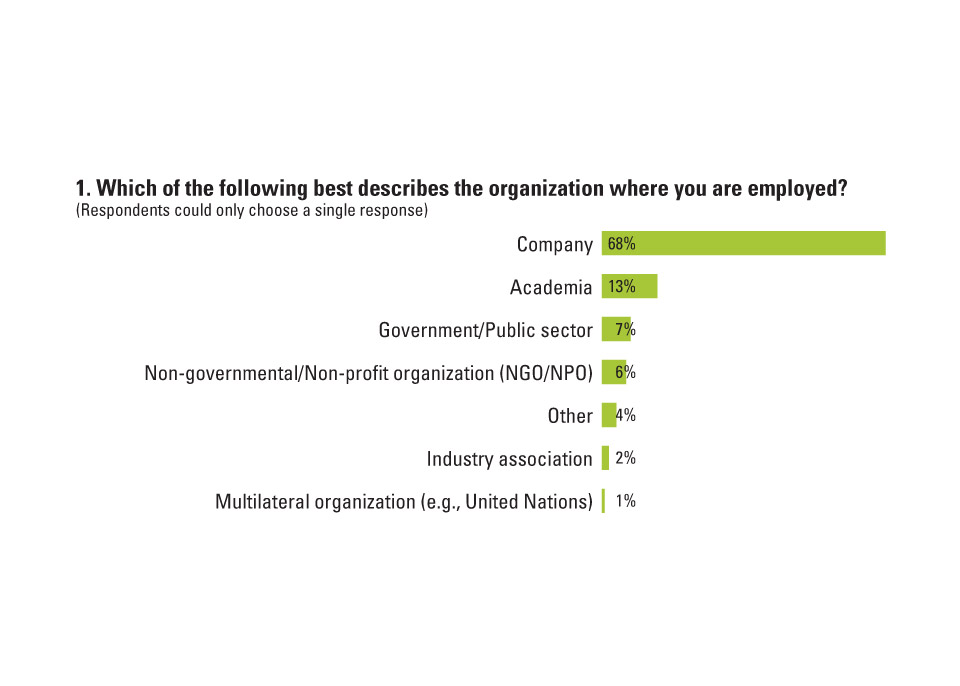
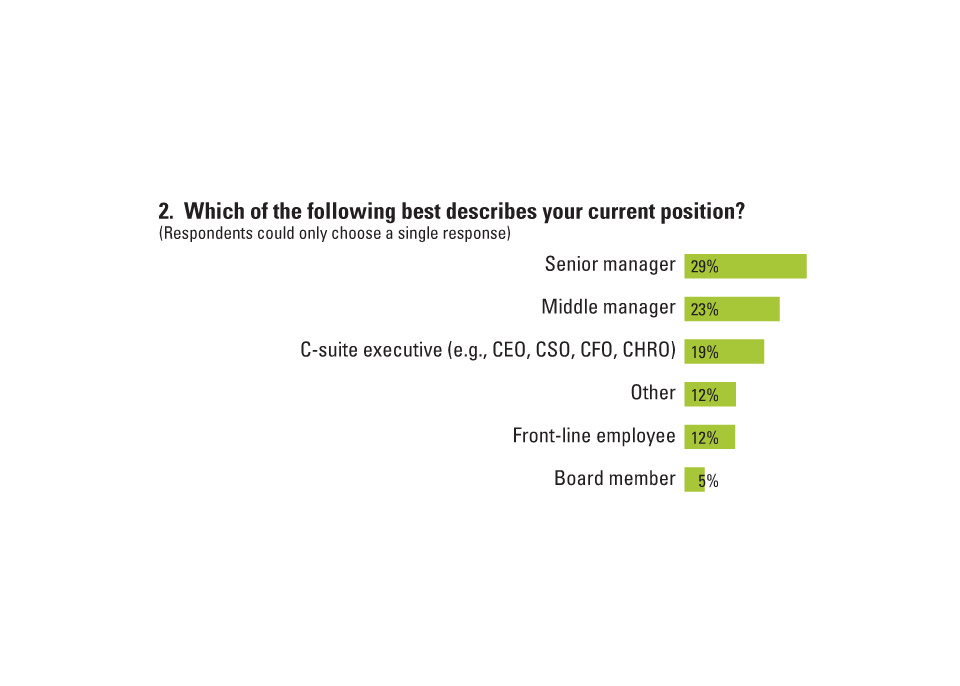
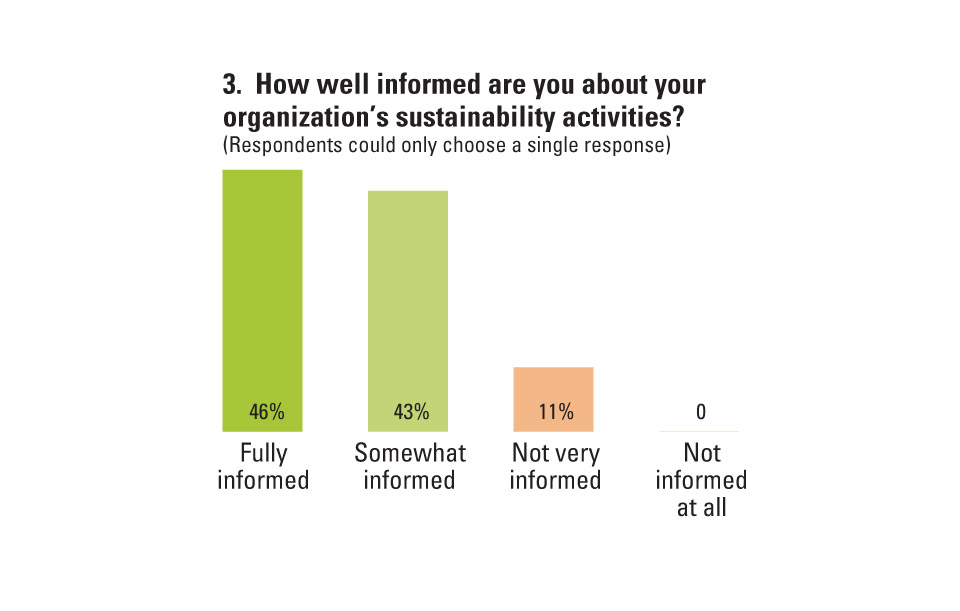

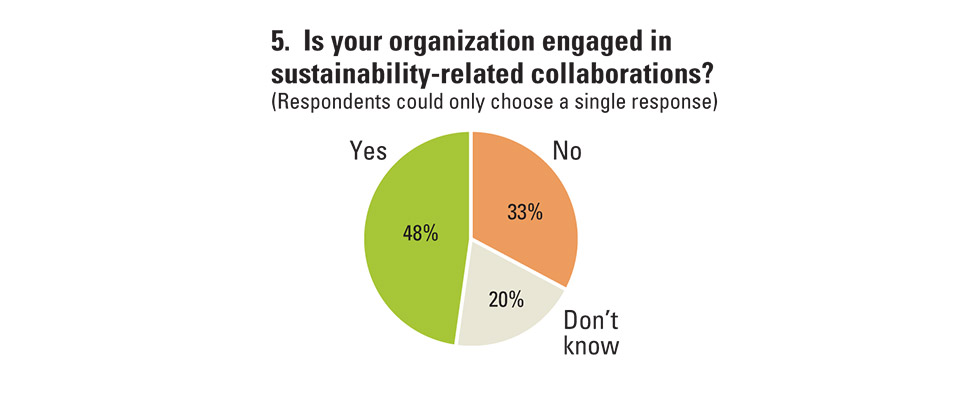
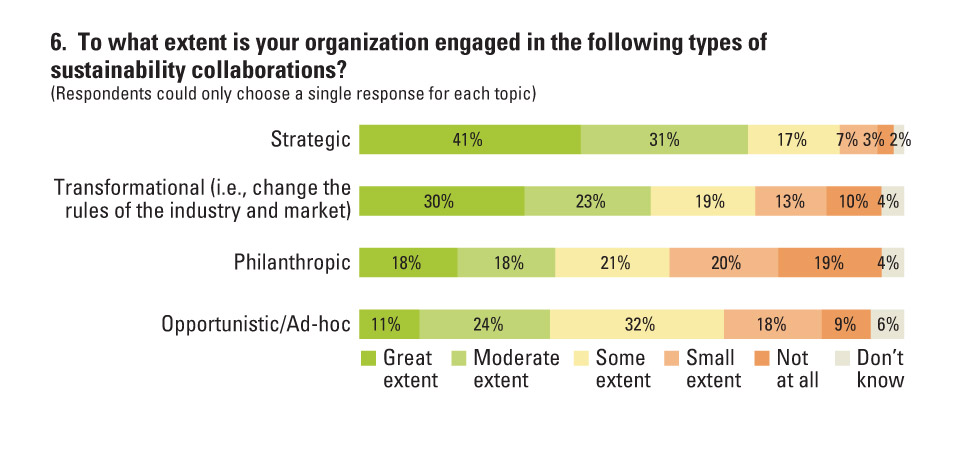
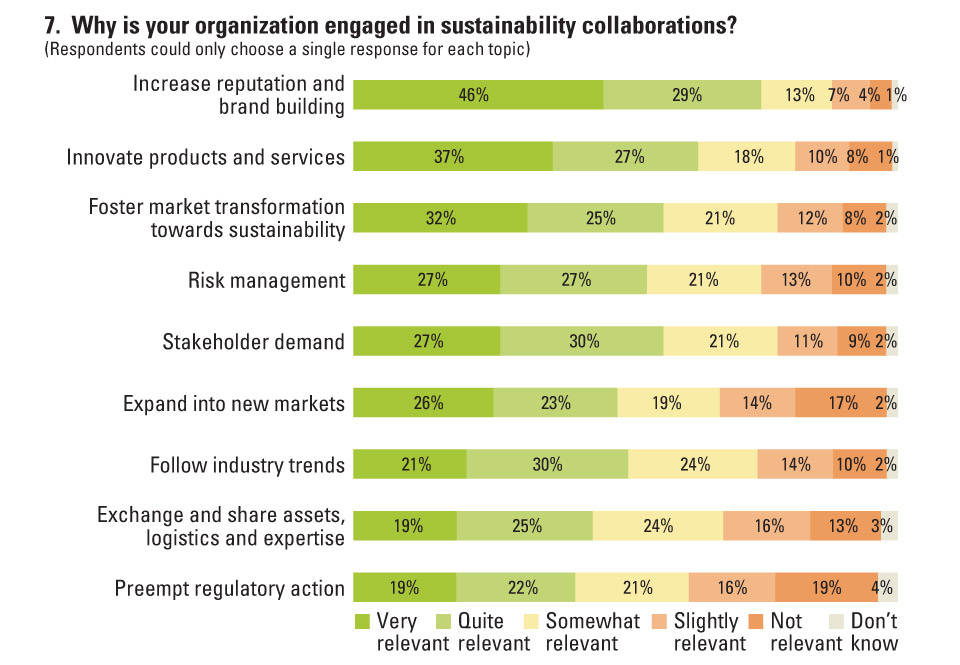
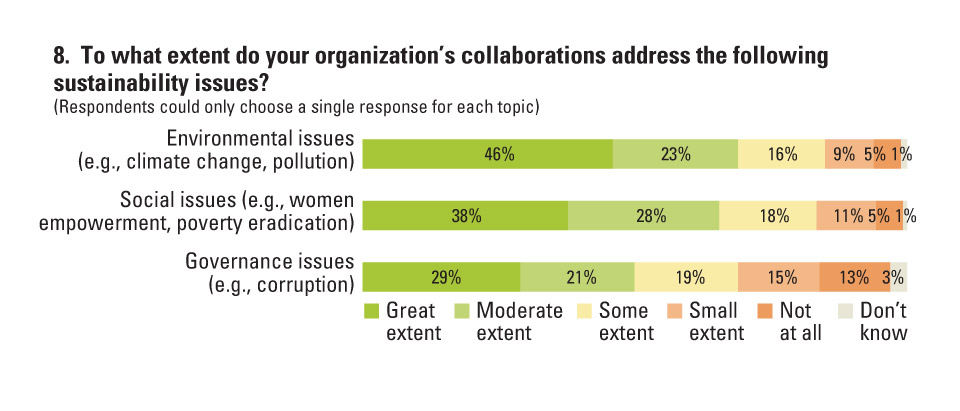
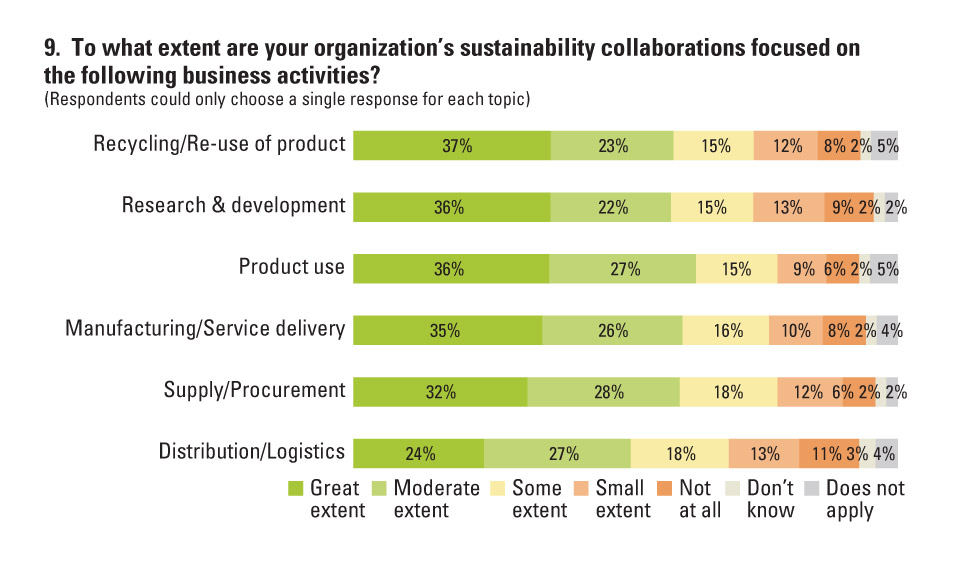
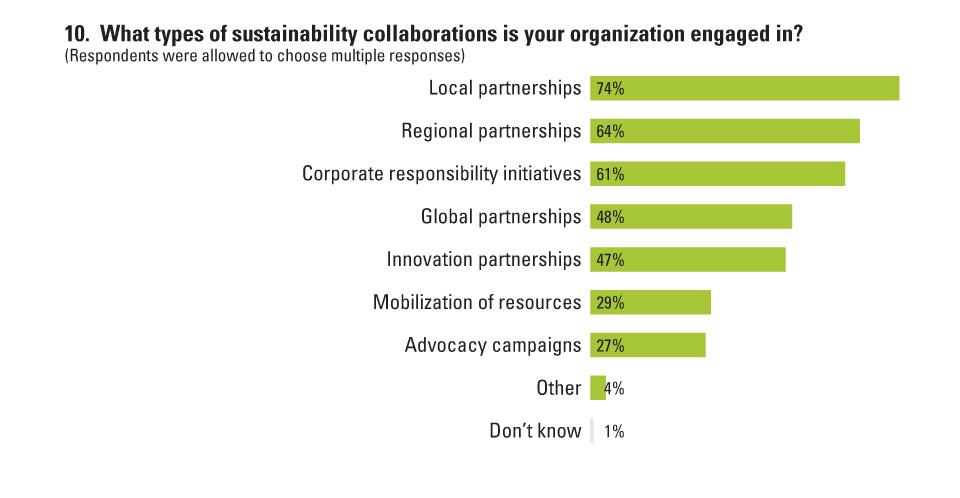
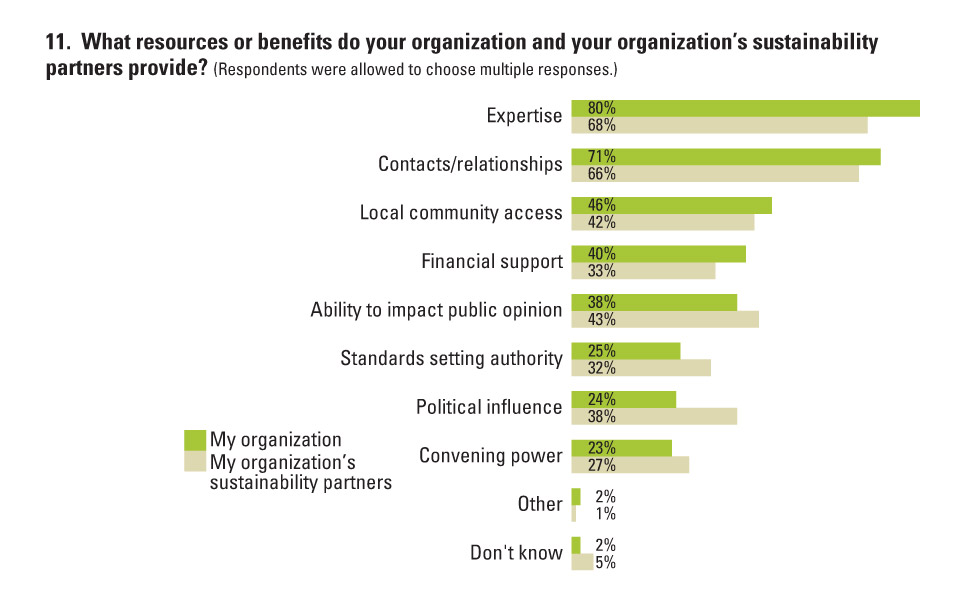
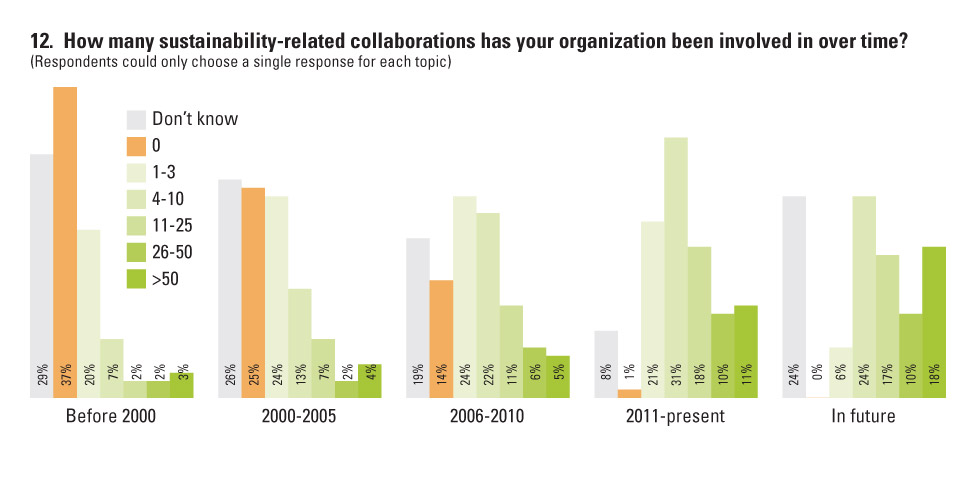
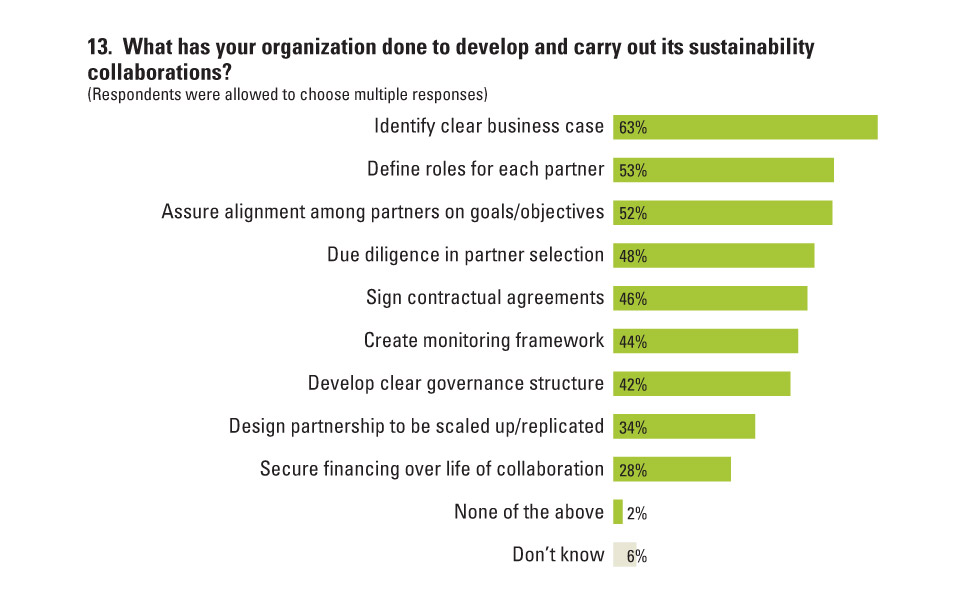
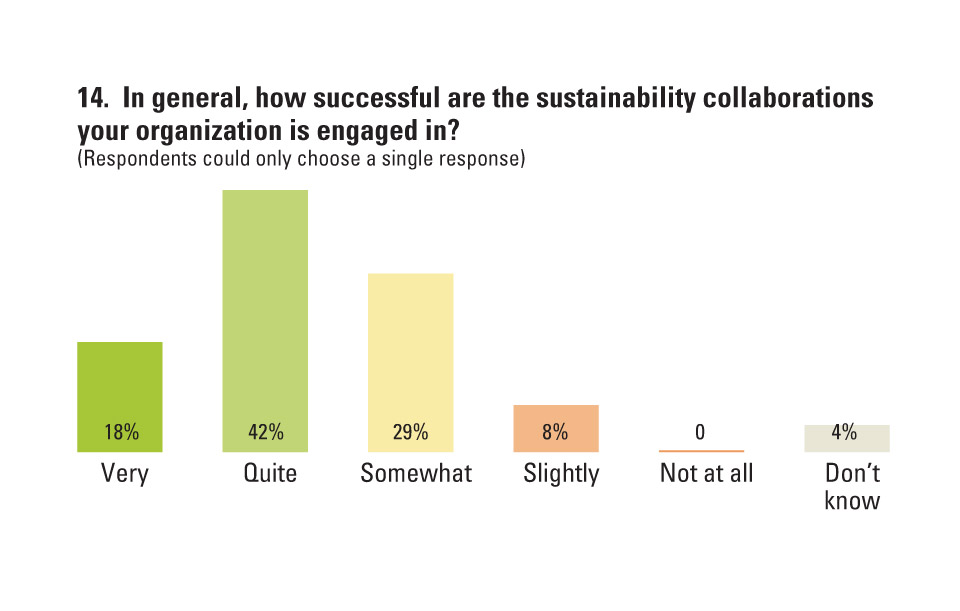

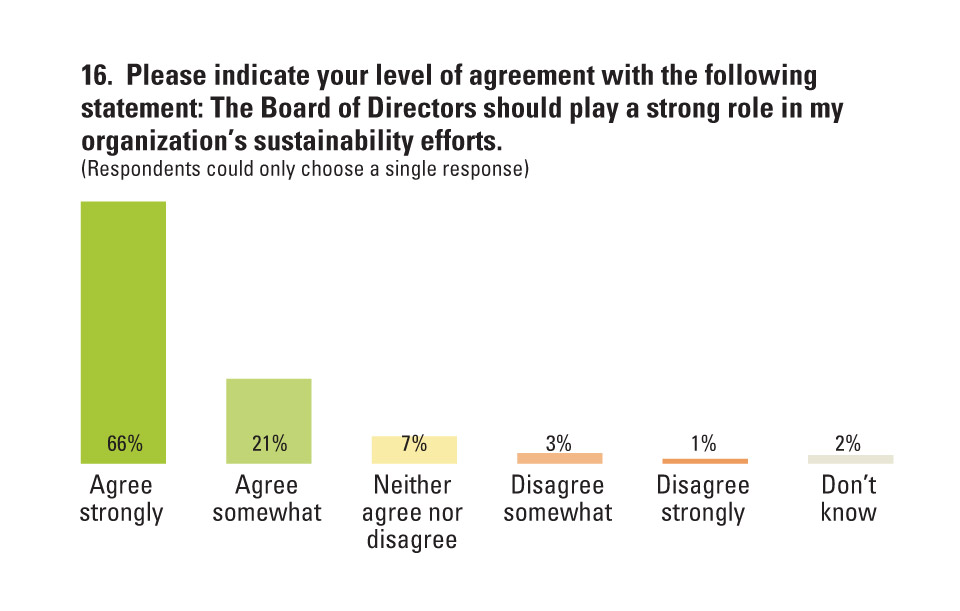

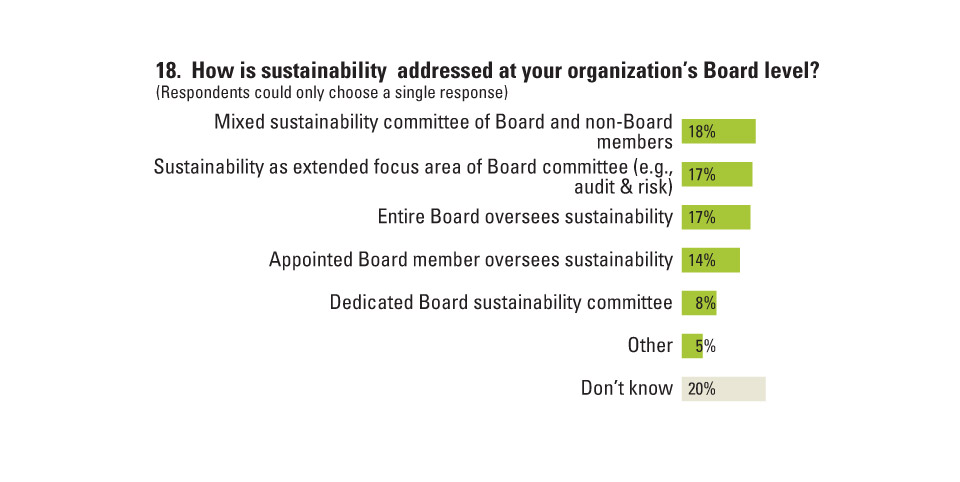
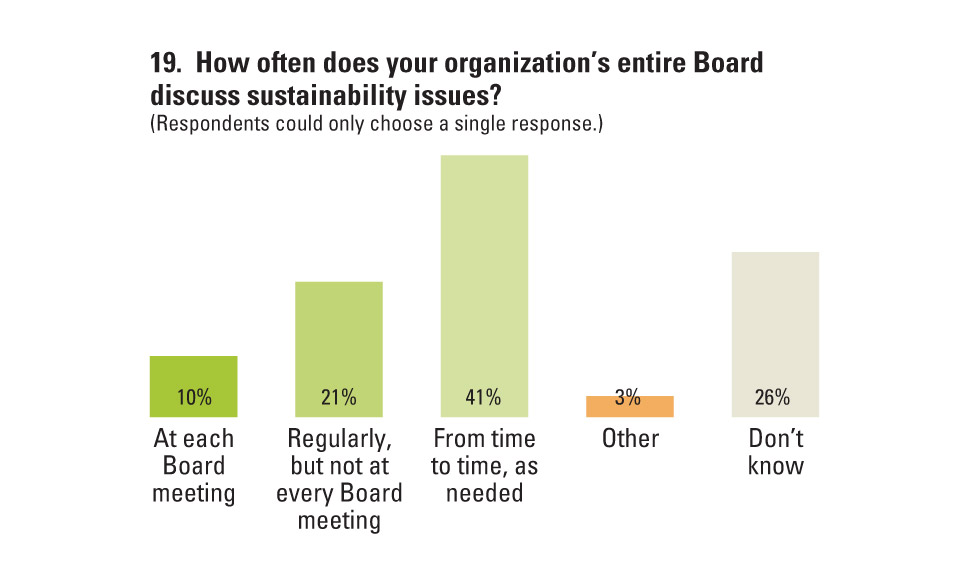

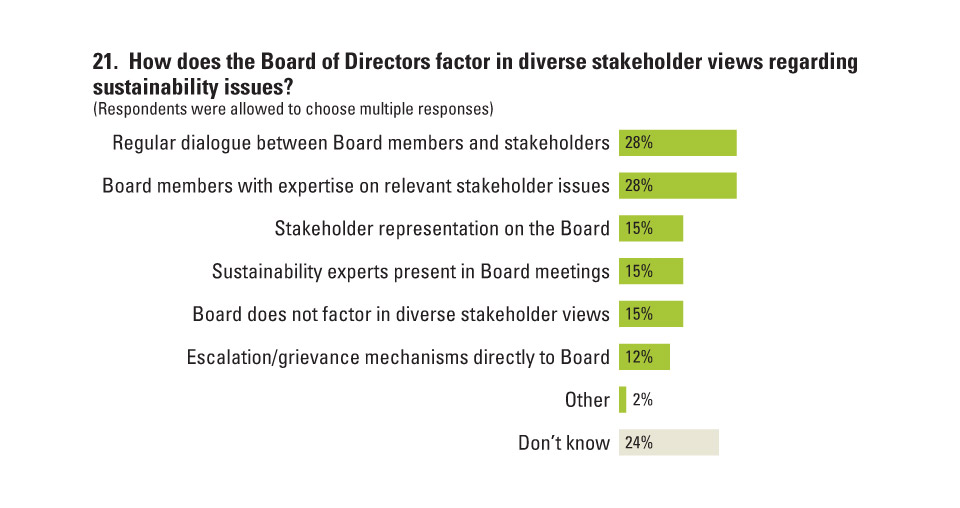
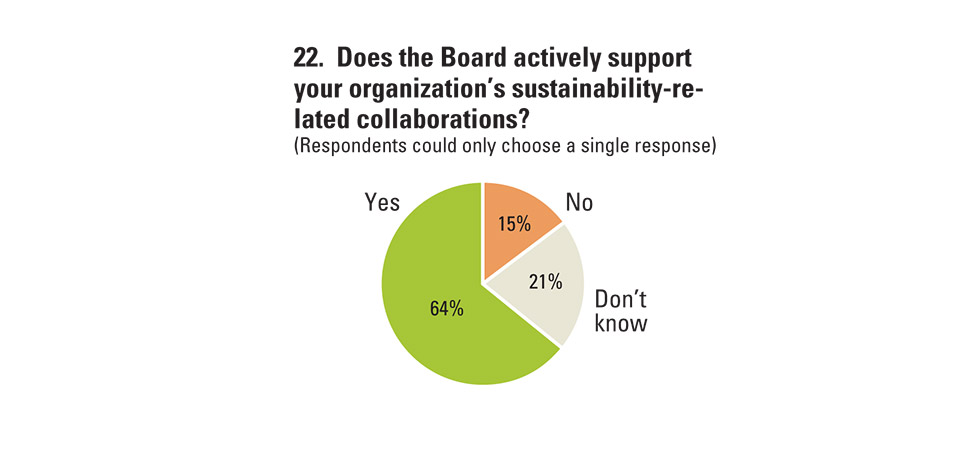
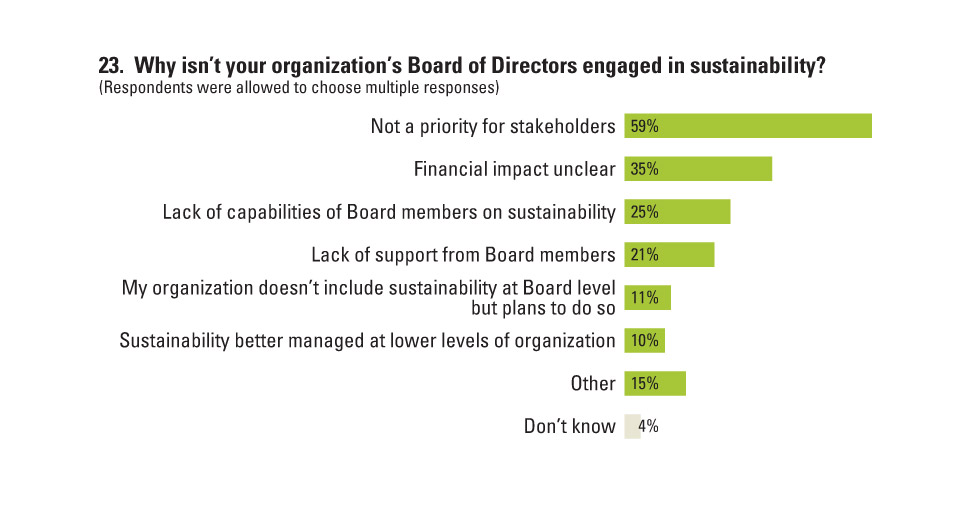

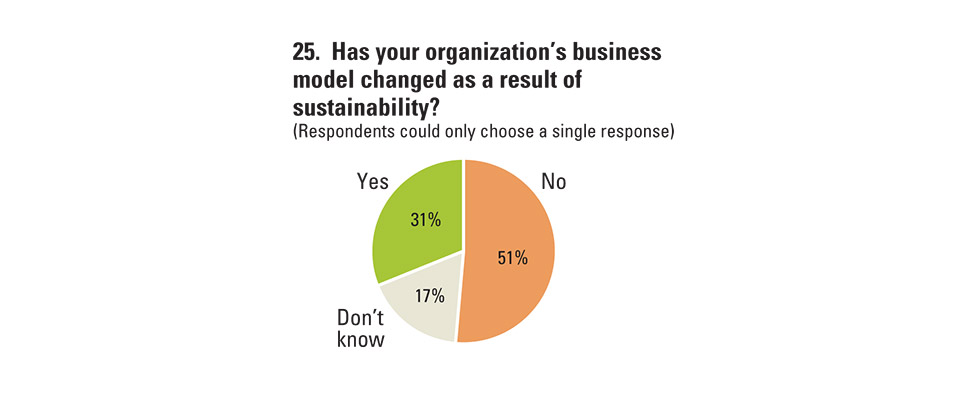
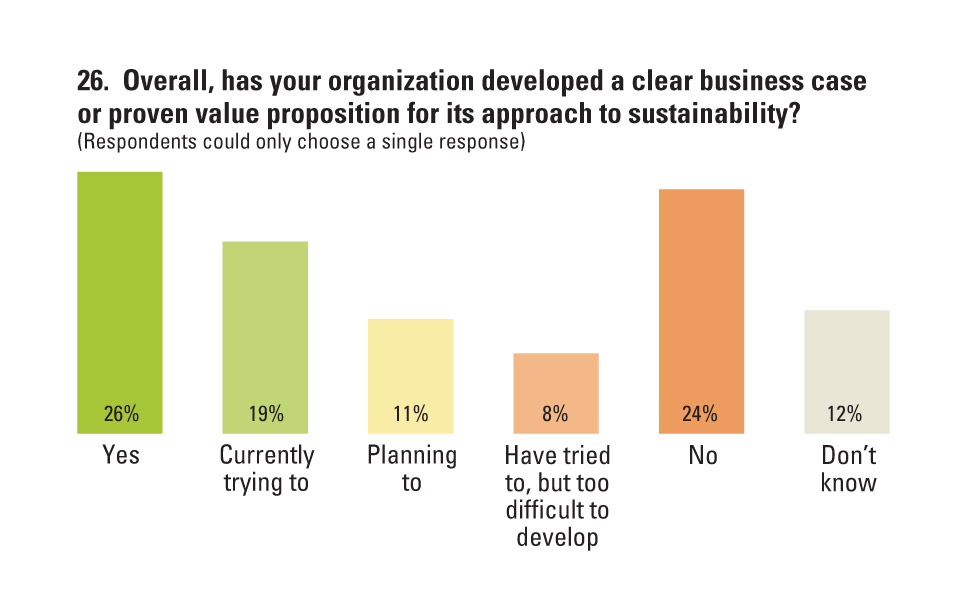
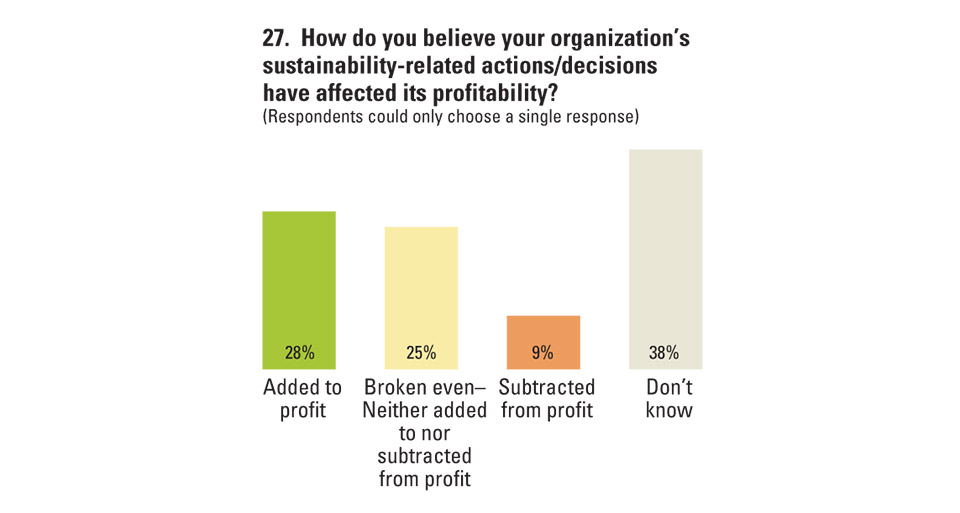

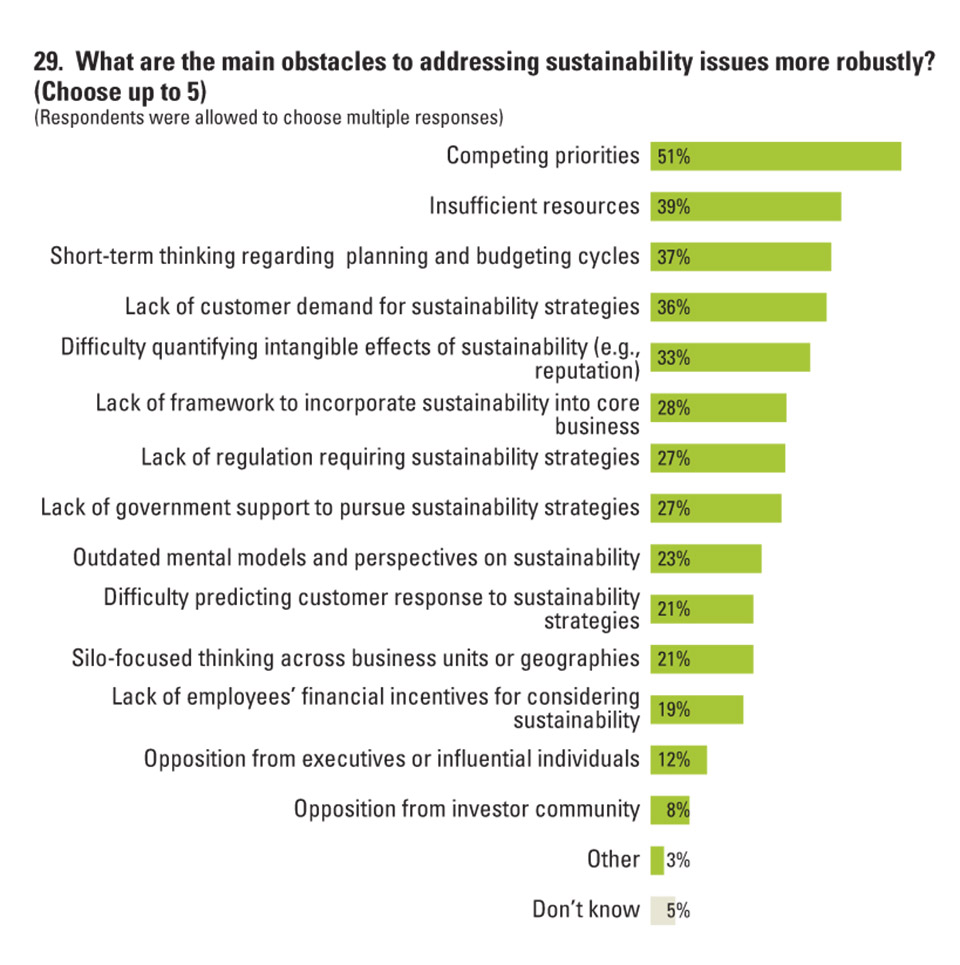
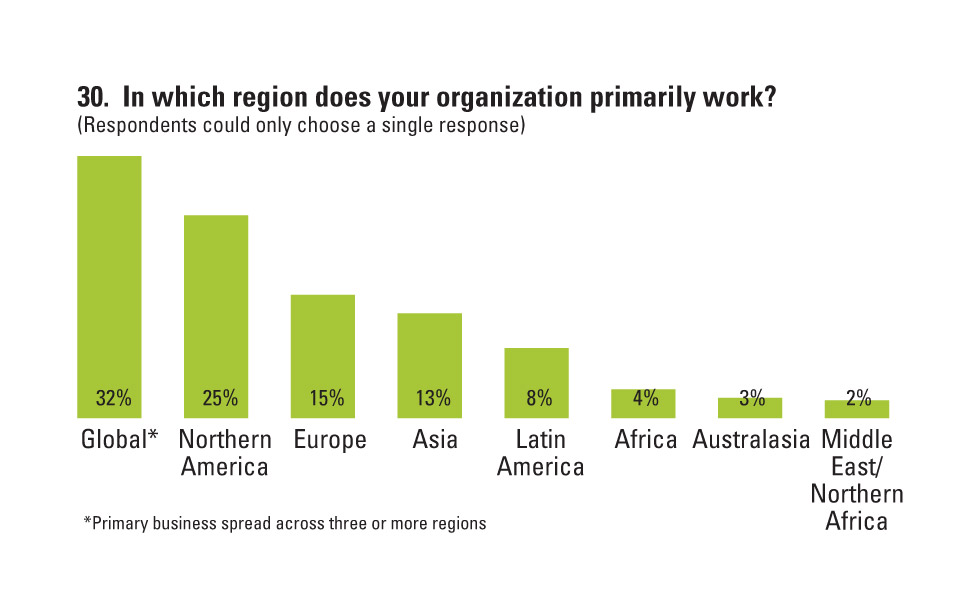

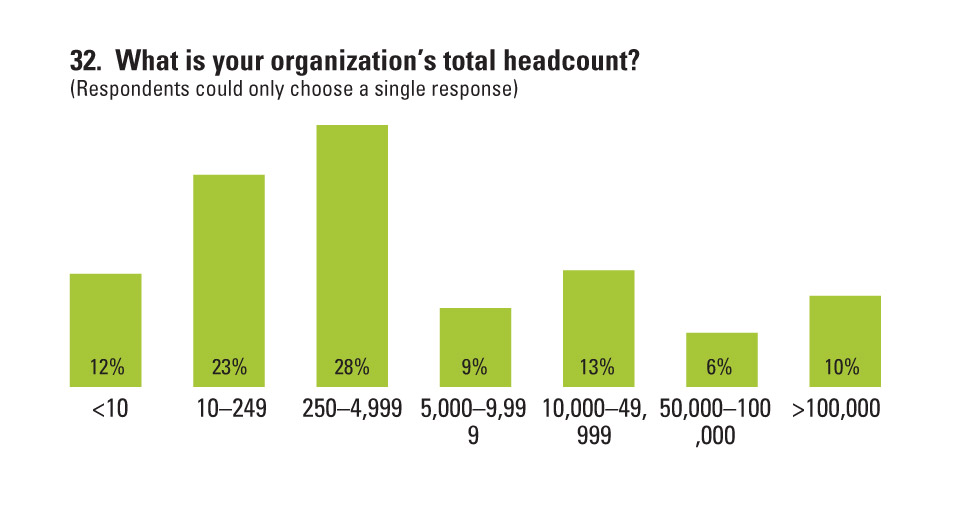
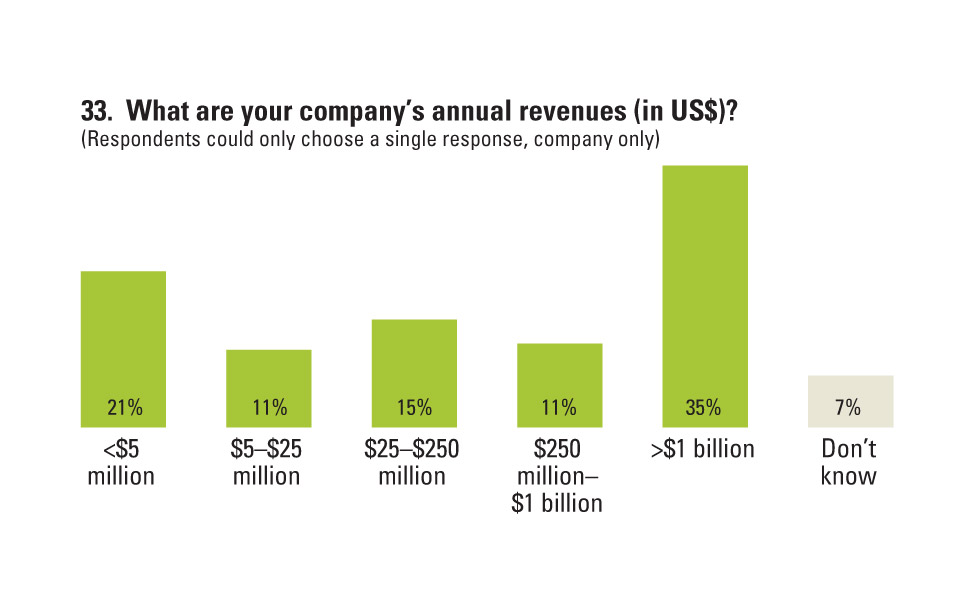
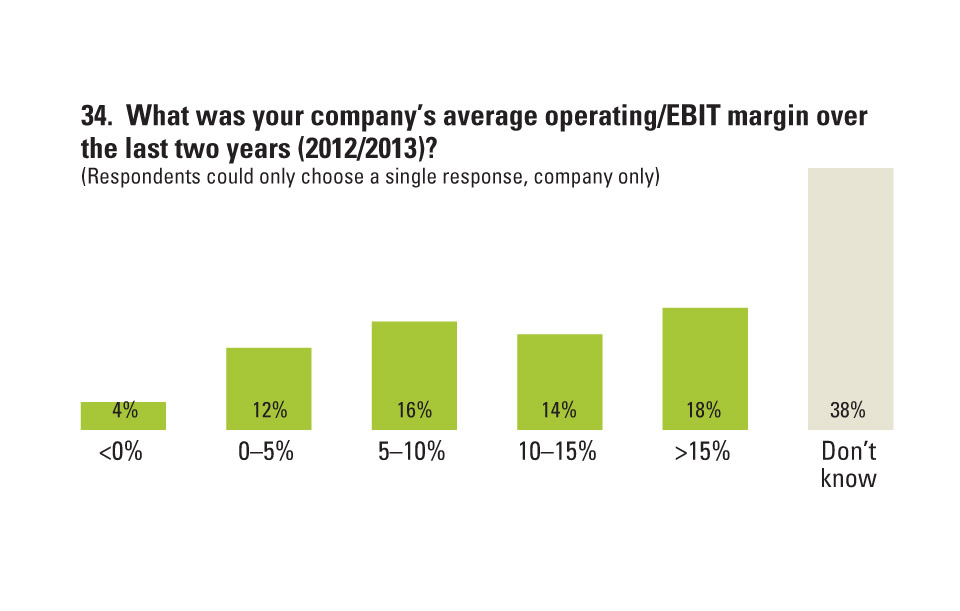

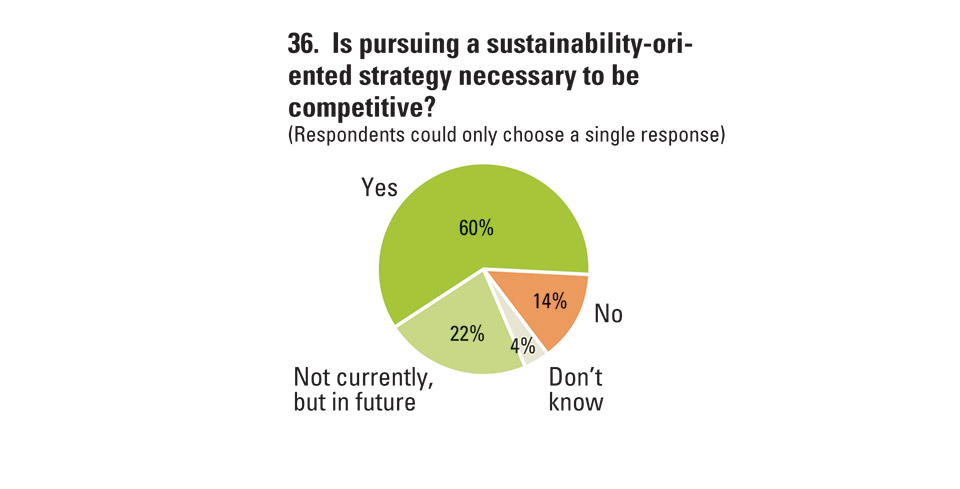
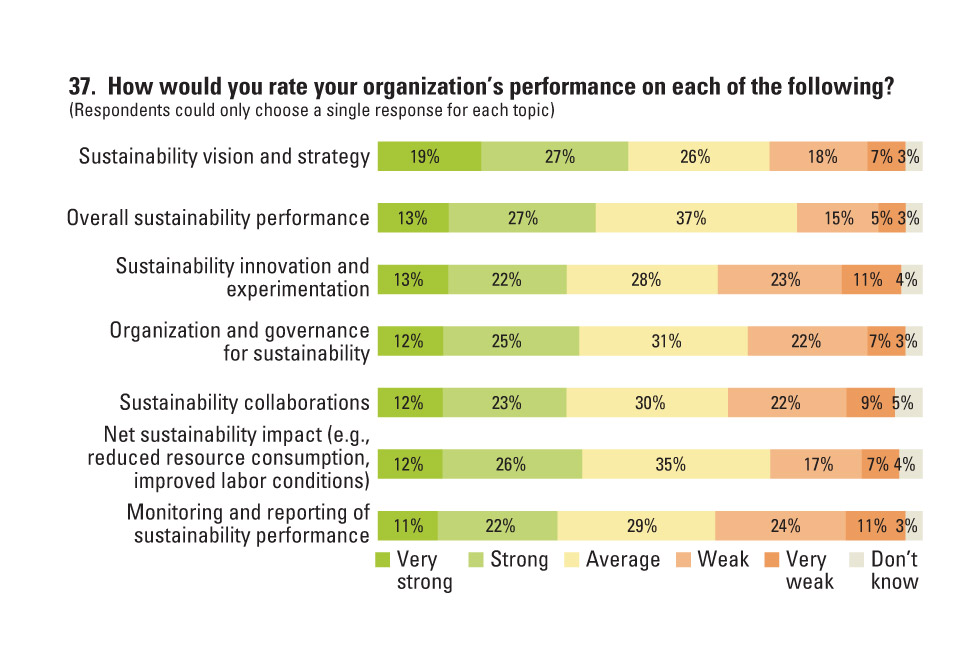
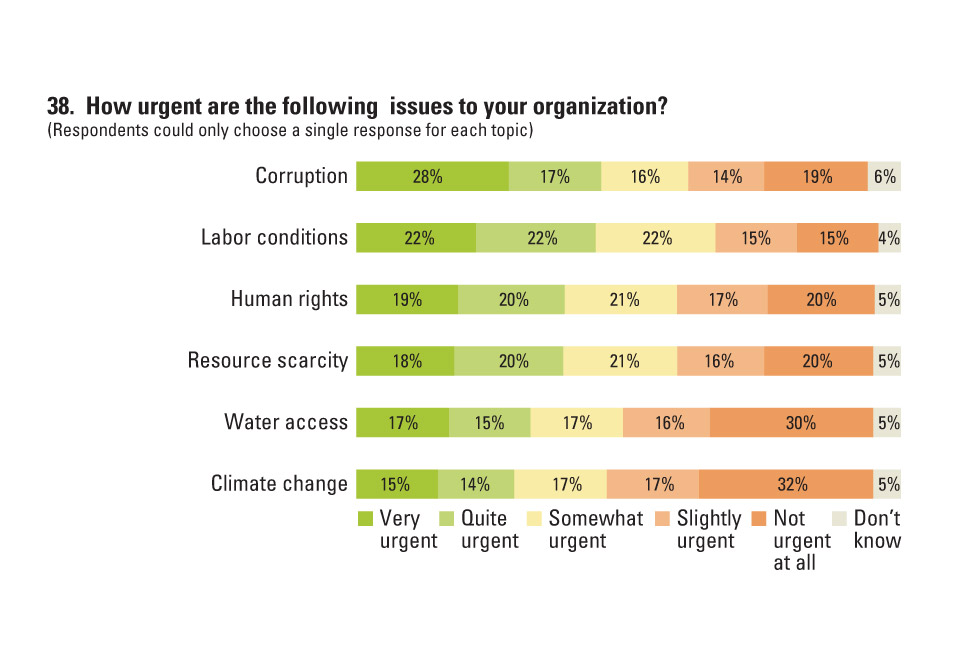
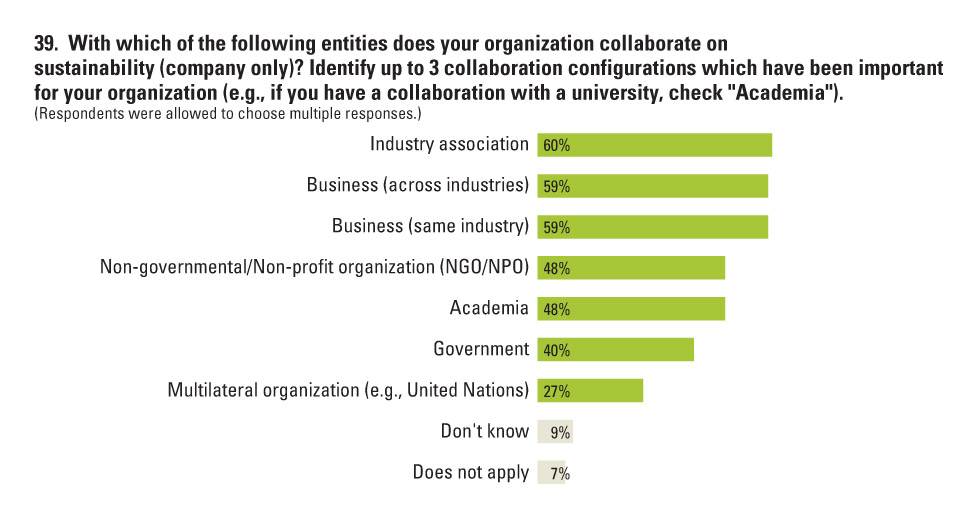
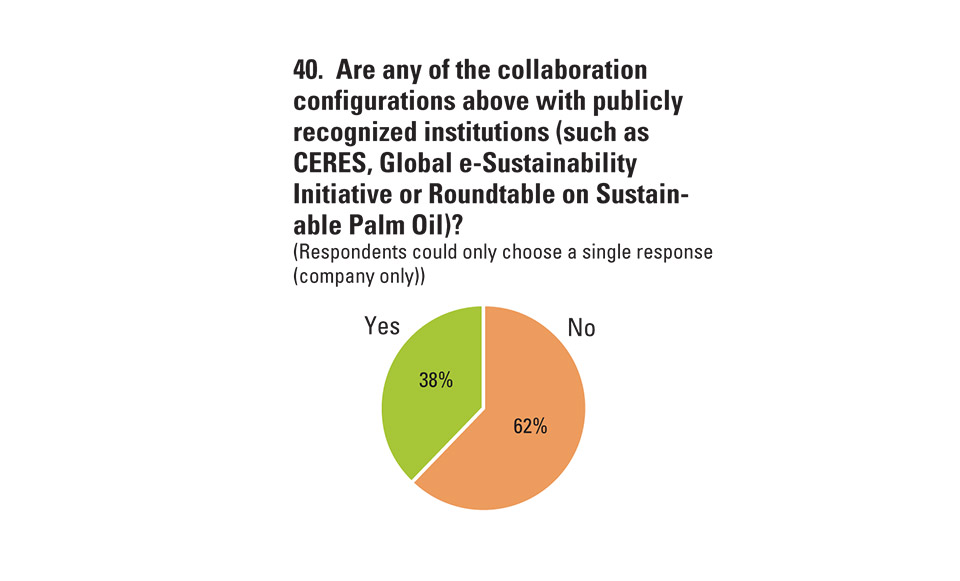
Comments (2)
Stephen Mathews
Nik Zafri Abdul Majid